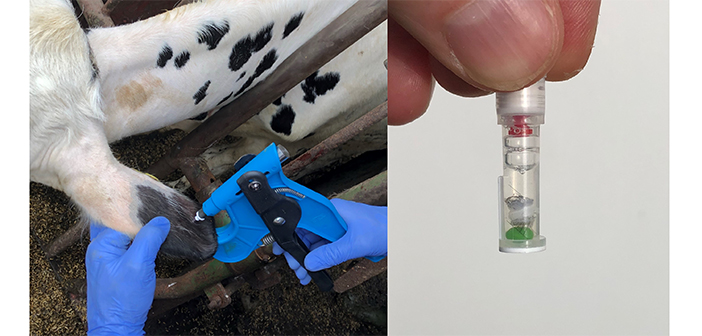Results from a recent study into Genomic testing have shown it can significantly reduce the costs of animal health by reducing disease incidence and antibiotic use. It is also shown to increase profitability by accurately predicting the performance and health traits of an animal, which also enables better farm management.
In 2019, 1,053 cows across four Arla UK 360 farms were genomically tested using CLARIFIDE Plus. It was found that animals with better genomic predictions for milk yield, mastitis and lameness, produced more milk, had reduced cases of those diseases and were treated with fewer antibiotics.
The main results found:
- A 43% reduction in the prevalence of mastitis between the bottom and top third of cows ranked on the Zoetis Mastitis trait, which equated to £38 a cow per lactation.
- A 1,604kgs (33%) difference in milk yield between the bottom and top third of animals ranked on genomic milk yield PTA, equating to £433 a cow per lactation based on a milk price of 27ppl.
- A 42% reduction in the prevalence of lameness between the bottom and top third of animals ranked on the Zoetis lameness trait, equating to £13 a cow per lactation.
- A 44% reduction in the amount of lactating cow intramammary antibiotic tubes that were used in the top 25% of cows ranked on DWP compared to the bottom 25%. This amounted to around 1.8 times more tubes being used in the bottom 25% compared to the top 25%.
The results from the UK study were supported by a more in-depth study in the US, published in 20201, which put exact figures on the value of the CLARIFIDE Plus bespoke selection index Dairy Wellness profit (DWP). It found the average animal ranked in the top 25% on DWP stayed in the herd 202 days longer than the average animal in the bottom 25% and returned an extra £1,315 in income over feed costs.
Zoetis ruminant veterinary consultant, Joshua Batterham, said: “Using CLARIFIDE Plus gives farmers a clearer idea of the potential of a heifer pre-weaning. This means they can manage how they treat each animal, such as deciding which animal to breed replacements from, which to put to beef, as well as those they may consider selling. It also helps inform bull choice by correcting parentage, identifying carriers of infertility genes, and aiding in corrective mating.
“By only breeding from animals with the best genomic predictions farmers can have longer lived, healthier cows, which will reduce replacement rates and costs and will significantly improve the carbon impact of the dairy operation. These are all factors of increasing importance, with more focus being placed on farm efficiency due to direct support payments being phased out and the 2040 net zero target.”


